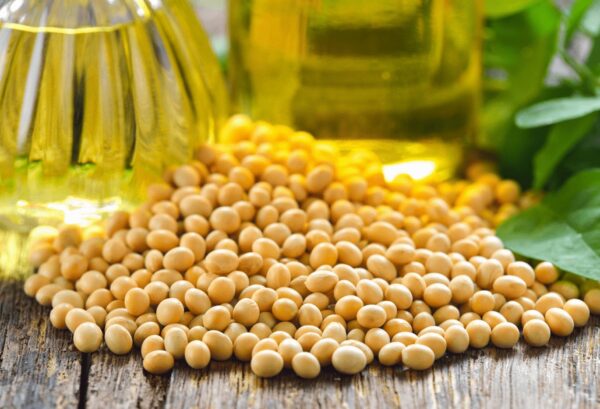Who We Are

Contact Us
Agrikarim Oil & Grains Trading LLC
Vegetable Oils, Oilseeds and Grains
Sharjah Media City, Sharjah – United Arab Emirates (UAE)
trade@agrikarim.com




AgriKarim
3-Night French Riviera Tour from Milan to Monaco
Leave Milan and follow the lead of the jet set crowd to the south of France! The 3-night tour takes a route through north Italy, passing San Remo, as well as the glittering French Riviera (Côte d'Azur). Discover the highlights of Monaco on a walking tour; get to know the celebrity-studded towns of St Raphael, St Tropez and Cannes; and fall in love with Provence during visits to Saint-Paul de Vence and Grasse.
Monaco
EUROPE
WEATHER ON THE WEEK
28°C
22°C

Vegetable Oils, Oilseeds and Grains
Sharjah Media City, Sharjah – United Arab Emirates (UAE)
trade@agrikarim.com
© Copyright 2023 - 2024 | Agrikarim Oil & Grains Trading LLC | All Rights Reserved
Sunflower seeds obtained from oilseed sunflower crops cultivation are used to producer sunflower oil ,Due to high oil content, sunflower seeds can be processed to produce oil using expellers and also by using the solvent extraction methods.
To produce oil from sunflower seeds, they must be cleaned first to remove any foreign matter and dust. The cleaned seeds are usually dehulled, i.e., shell is removed to separate the kernels, using centrifugal or pneumatic sheller or dehuller. About 20% to 30% of hulls are removed during dehulling. Removal of hulls improves the quality of oil as well as meal , The dehulled sunflower seeds are ground to produce coarse meal. This is then crushed into uniform fine particles using hammer mills or grooved rollers, This fine meal is then heated and then pressed in expellers to obtain oil. The deoiled meal contains some residual oil which is extracted using solvent extraction.
During expeller process, sunflower kernels are crushed under pressure to expel the oil within. This method may or may not use higher temperatures. Cold pressed oil has lower free fatty acids content and lesser oxidation products as compared to the oil expelled using higher temperatures. This oil is filtered to remove any solids. The expeller sunflower oil may be used directly for consumption in various applications, The second and most commonly used manufacturing process to produce sunflower oil is the solvent extraction process using food grade hexane as the solvent. Hexane is passed through the expeller oil cake or meal to obtain a mixture of oil and solvent called miscella. Solvent is removed from the oil and the remaining meal in separate equipments to obtain desolventized sunflower oil and meal. Large capacity solvent extraction plants are used to produce solvent-extracted sunflower oil on commercial scale. This oil is processed further to remove the free fatty acids, gums, colour, waxes and odour through alkali refining, degumming, bleaching, winterization and deodorization.
The oils obtained by both these processes undergo refining to produce refined sunflower oil.
Soybean oil is made by extracting oil from whole soybeans.
the summary of processing :
Cleaning Section of Soybean Oil Production:
The soybeans are first cleaned, dried and dehulled prior to oil extraction. The soybean hulls needs to be removed because they absorb oil and give a lower yield. This de-hulling is done by cracking the soybeans and a mechanical separation of the hulls and cracked soybeans. Magnets are used to separate any iron from the soybeans.
The soybeans are also heated to about 75°C to coagulate the soy proteins to make the oil extraction easier.
Extraction Section of Soybean Oil Production:
First the soybeans are cut in flakes which are put in a percolation extractors and immerged with a solvent, normally hexane, After removing the hexane, the extracted flakes only contain about 1% of soybean oil and is used as livestock meal or to produce food products such as soy protein. The hexane is separated from the soybean oil in evaporators. The evaporated hexane is recovered and returned to the extraction process. The hexane free crude soybean oil is then further purified.
Refining Section of Soybean Oil Production: The crude soybean oil still contains many oil-insoluble and oil-soluble impurities that needs to be removed. The oil-insoluble material are removed with filtration and the soluble materials is removed with different processes including degumming (removing of phosphatides), oil refining (washing with alkaline solution to remove free fatty acids, colorants, insoluble matter and gums) and bleaching (with activated earth or activated carbon to remove colour and other impurities.
Canola oil is processed similarly to other seed oils. After thorough cleaning, canola seed is crushed to extract the oil. The seed may be “cold-pressed,” but in most cases, the seed is heated and flaked to allow more oil to be released. Oil is not water-soluble, so an approved solvent called hexane can be used to remove more of the oil from the seed solids. The hexane is used under carefully controlled conditions, and is recycled and reused. It does not stay in the oil or the solids.
Following extraction, the oil can be further refined to produce a shelf-stable, clear and neutral-tasting oil. Color pigments can be removed by a filter containing natural clay (a process sometimes describing as “bleaching,” although no bleach is involved). Great care is taken to ensure the finished product is of high quality. Canola oil processed in this way can be stored at room temperature for about one year.
After the oil has been extracted, the solid parts of canola seed are processed into canola meal. This protein-packed product is used in animal feed.




